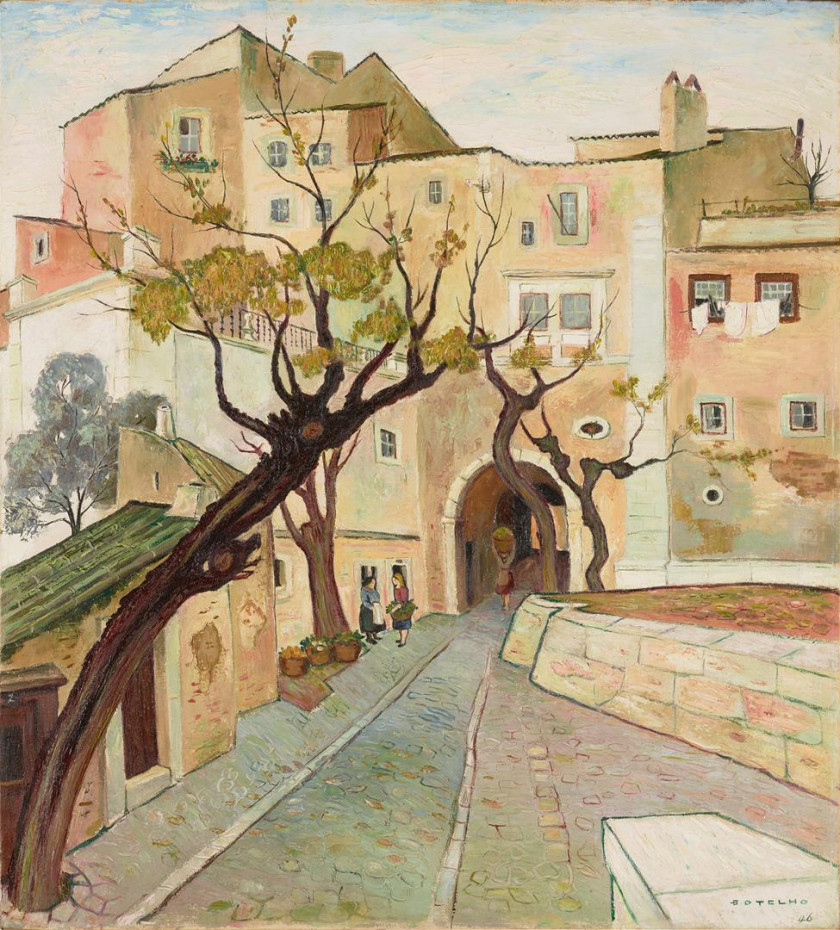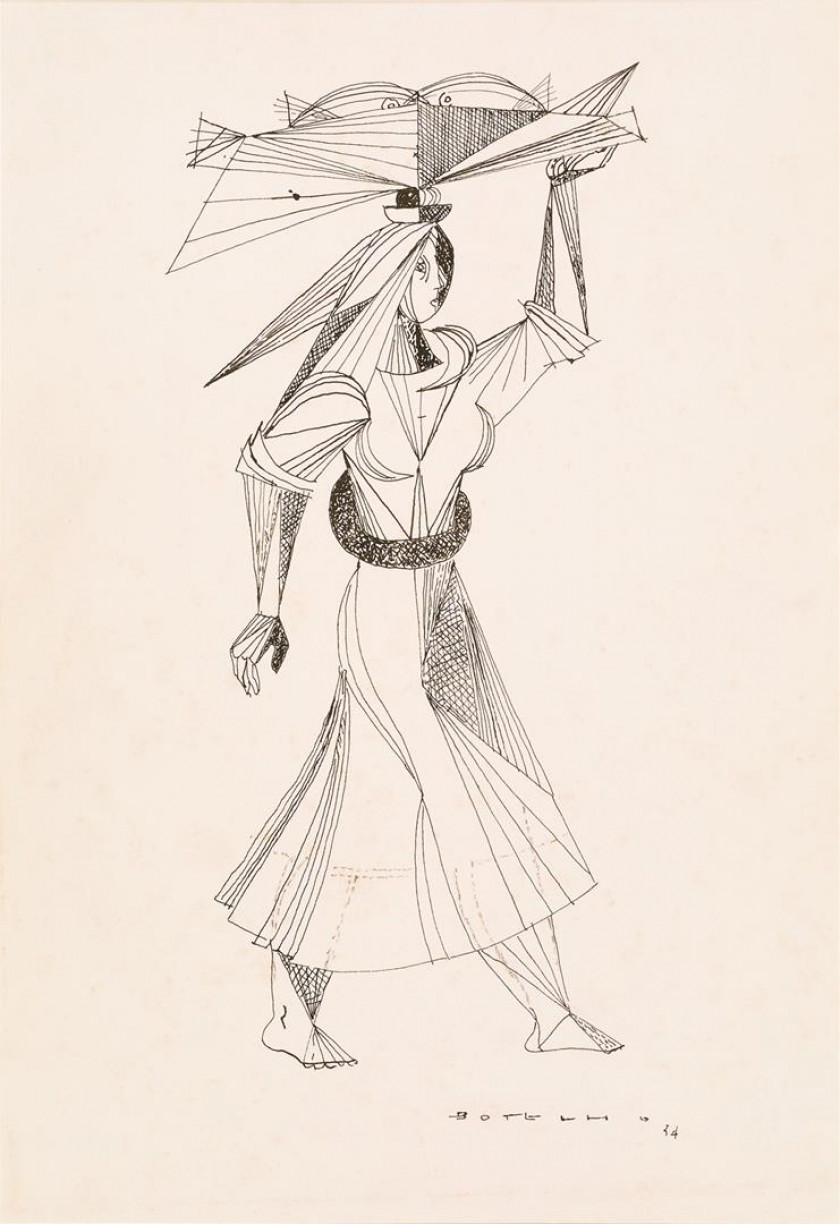Carlos Botelho (Lisbon, 18th, 1899 - Lisbon, August 18th, 1982), or “the Lisbon painter” as he would become known, was one of the most important artists of his time. In 1919 Botelho attended the National Academy of Fine Arts. However, not conforming with the conservative nature of teaching, he left the Academy and started a career as an illustrator. In 1923 he started to work for the newspaper ABC and, in 1928, for Sempre Fixe with Ecos da Semana. This humorous drawing page which he kept for more than twenty years, constitutes an essential memory of Lisbon and a relationship between the artist and his society. These were his first plastic exercises, already marked by the graphic and constructive sense that would be linear in his work. In 1931 he participated in the organization of the Portuguese Pavilion at the International and Colonial Exhibition in Paris. He then attended the Academy Grande Chaumière and the Academy Colarossi, immersing himself in the Parisian impressionist culture. The watercolors, portraits and caricatures of this stage, announced the aesthetic minimalism that was also manifested in his Lisbon landscapes, where he reduced the houses to structural elements and to absent figures. In the paintings he made during his stay in New York and New Orleans (1939), on the contrary, he captured the dynamism of American cities, representing letterings and other details of their urban spirit. In 1931 the artist exhibited at the 2nd Independents Salon and in 1932 he held his first individual exhibition at the Salon Bobone. From this point on he held consecutive exhibitions, achieving extraordinary recognition both in Lisbon and internationally. Important moments in the international panorama were the participation in the Universal Exhibition of New York and San Francisco and the distinctions granted in the first and third editions of the São Paulo’s Biennial (Brazil, 1951 and 1955). Internally he received the Amadeo de Souza-Cardoso prize in 1938, and the Columbano prize in 1940. As a traveling man Botelho painted many places. However, Lisbon, his hometown, became an inspiration and iconic symbol of his painting, capturing it with its unique tones and luminosities. His work is represented in the main collections in Portugal.
Francisca Morais Vaz

